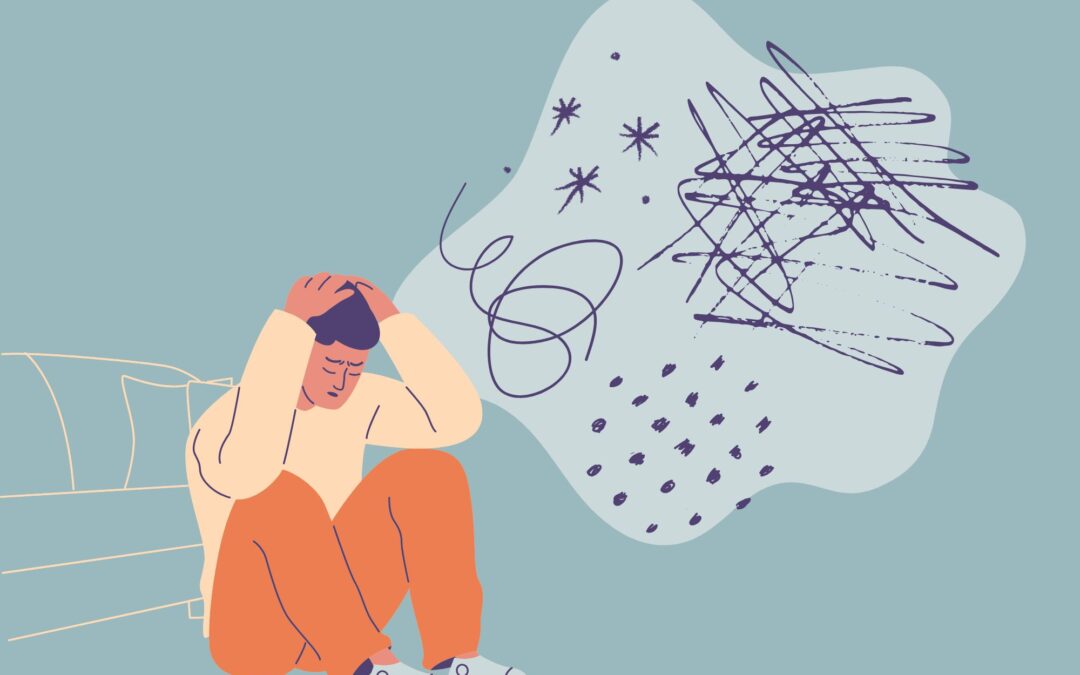In recent years, the term “OCD” has become a popular buzzword, often used casually to describe behaviors such as being organized or meticulous about cleanliness. Phrases like “I’m quite OCD” are common in everyday conversation, but it’s important to understand what this term truly represents. The casual use of “OCD” can unintentionally minimize the disorder’s serious impact on those who live with it. Understanding obsessive-compulsive disorder (OCD) can help to increase awareness around the issue of the buzzword and empathy for those affected by it.
Obsessive-Compulsive Disorder (OCD)
OCD stands for obsessive-compulsive disorder (OCD) – a chronic and often debilitating mental health condition. It is characterized by persistent, unwanted thoughts (obsessions) and repetitive behaviors or mental acts (compulsions) that individuals feel compelled to perform.
Obsessions: Intrusive Thoughts and Images
Obsessions are unwanted, intrusive thoughts or mental images that cause significant distress. These thoughts often relate to deeply personal fears or concerns, such as safety, morality, or taboo subjects like sex and religion. While everyone experiences occasional intrusive thoughts, for those with OCD, these thoughts become extremely distressing and lead to compulsions.
Common obsessions include:
- Contamination fears (e.g., being exposed to harmful germs or substances)
- Sexual obsessions (e.g., harming others or acting on impulses)
- Violent obsessions (e.g., harming oneself or others)
- Perfectionism-related obsessions (e.g., an overwhelming need for symmetry or exactness)
Compulsions: Behaviors to Relieve Distress
Compulsions are repetitive behaviors or mental acts performed in response to obsessions. They aim to alleviate distress or prevent a feared event from occurring. For example, someone with OCD might wash their hands repeatedly until they feel “perfectly” clean to prevent contamination or check if the stove is off to prevent potential harm. While these actions provide temporary relief, they reinforce the OCD cycle, making it more difficult to break over time.
The OCD Cycle is Self-Reinforcing:
- Intrusive obsessions lead to distress.
- Compulsions are performed to alleviate the anxiety.
- Temporary relief is gained, but the cycle continues.
Over time, compulsions become necessary to manage the distress caused by obsessions, leading to significant life disruptions, such as avoidance of any reminders of the fear. Avoidance, in turn, feeds the OCD cycle, increasing the distress the next time a reminder occurs.
Key Psychological Factors in the OCD Cycle
- Doubt: A key cognitive feature of OCD is rumination over the meaning of intrusive thoughts that leads to a cycle of self-doubt. Individuals often question whether these thoughts reflect a hidden desire or moral flaw, asking themselves questions like, “Why am I having these thoughts?” “Do they mean I want this to happen?” or “Does this make me a bad person?” These doubts intensify the emotional distress caused by obsessions, making them harder to dismiss.
- Inflated Sense of Responsibility: Another cognitive factor is an inflated sense of personal responsibility. Those with OCD often feel a compulsive need to perform certain rituals or behaviors to prevent feared outcomes, even if the likelihood of these events occurring is minimal. This exaggerated sense of responsibility drives repetitive actions aimed at controlling or averting perceived threats.
- Shame and Isolation: The intrusive nature of obsessive thoughts—particularly those about taboo or socially unacceptable topics—can lead to significant shame. This shame, combined with the fear of being judged or misunderstood, often prevents individuals from seeking support or discussing their struggles. As a result, they may cope in isolation, relying on compulsions to temporarily relieve their distress, which only entrenches the disorder further.
Treatment for OCD
Effective treatment for OCD typically includes a combination of the following:
- Medications: Selective serotonin reuptake inhibitors (SSRIs) can help regulate serotonin levels and alleviate symptoms.
- Psychotherapy: Cognitive-behavioral therapy (CBT), particularly Exposure and Response Prevention (ERP), helps individuals face their fears and learn to manage distress without performing compulsions. Our practitioners at Compass Psychology provide treatment for OCD – you can find out more about them at our About -pages or by contacting us via email at info@compasspsychology.fi
- Self-Care: Stress management through mindfulness, exercise, and relaxation techniques can help reduce the intensity of OCD symptoms.
Conclusion
OCD is much more than a tendency toward neatness or perfectionism. It is a complex, debilitating disorder that can profoundly affect a person’s life. By understanding its true nature, we can foster greater empathy and avoid the casual use of “OCD” in ways that may be insensitive. If you or someone you know is struggling with OCD, seeking professional help is a crucial step toward breaking the cycle and leading a more fulfilling life.
To learn more about people’s journeys with OCD, you can check out The OCD Stories podcast and website. This project shares experiences of individuals, families, and professionals, and provides information and peer support from many different perspectives.

